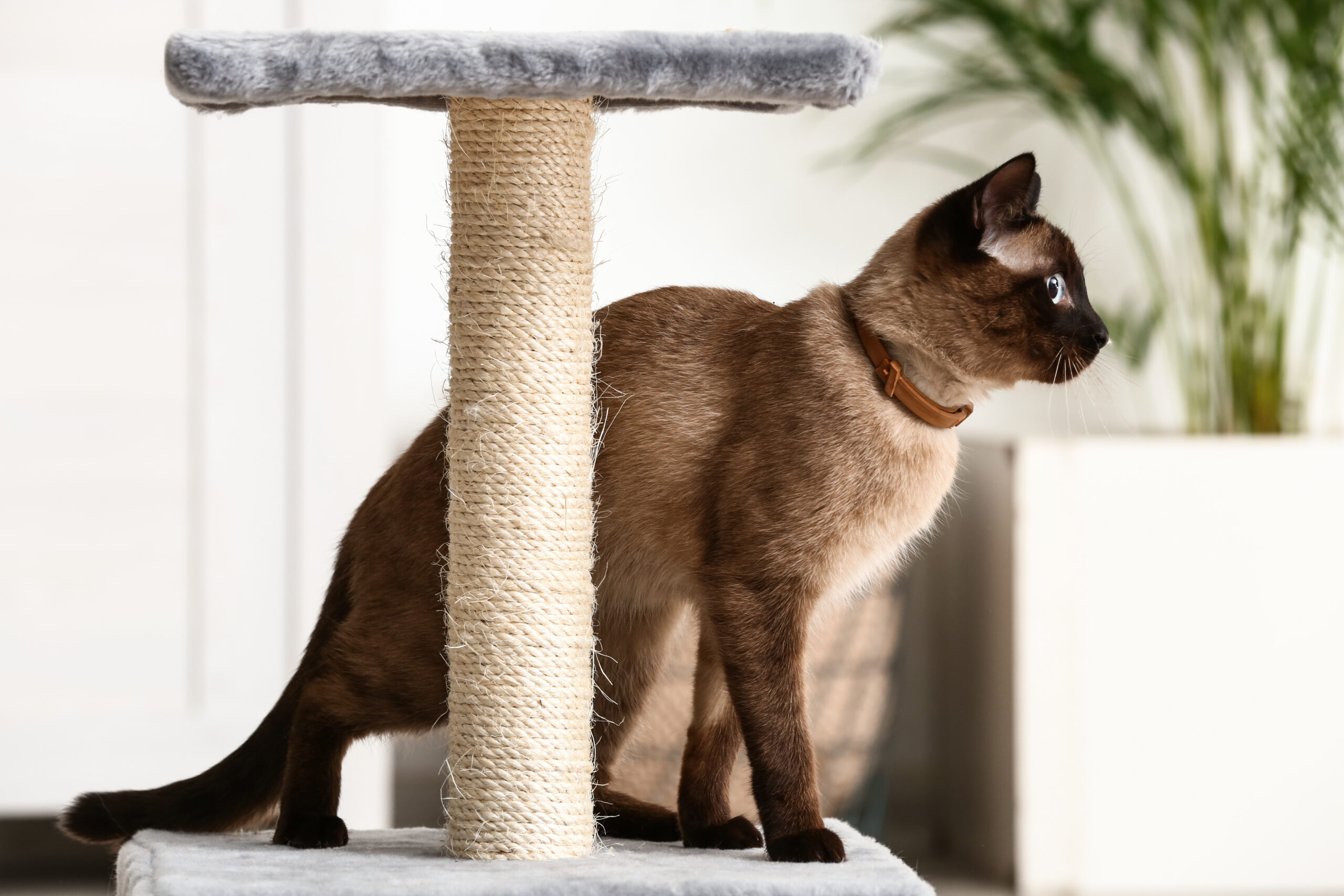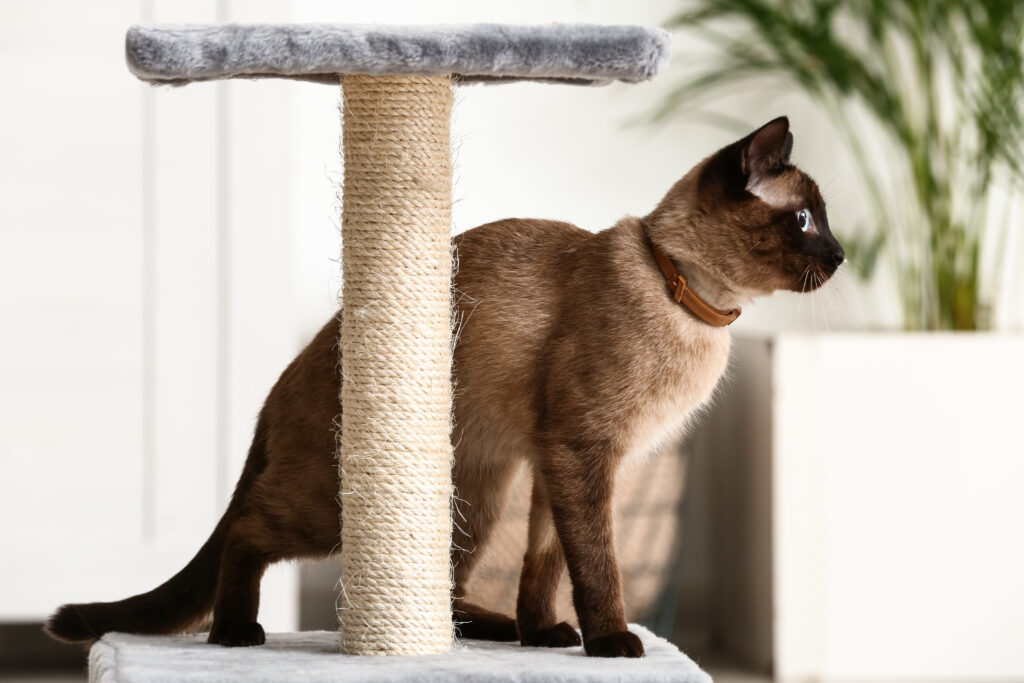
Hello, Cat Enthusiasts!
All cats have the scratching instinct which can’t and shouldn’t be suppressed but there’re ways to direct this behaviour towards appropriate objects to keep our homes from getting messy and enjoy stress-free relationships with our feline companions. In this article, we’re going to discuss how to get a cat to use a scratching post.
Tip
Kittens begin scratching at a young age, so it’s best to introduce your kitten to a scratching post as soon as it comes into your house.
If your cat is an adult and has already discovered the furniture, it can be more difficult to convince it to change its habits. However, it’s never too late to start training.
How to Get a Cat to Use a Scratching Post
1. Place the Scratching Post Strategically
Adequate placement of the scratching post plays a significant role in successful training. You will have a better chance of getting your cat interested in a new post if you initially put it somewhere the cat would scratch naturally.
Cats scratch objects to mark territory, express emotions, keep their claws healthy and stretch out muscles after waking up. Therefore, the most convenient locations for the scratching post from a cat’s perspective include: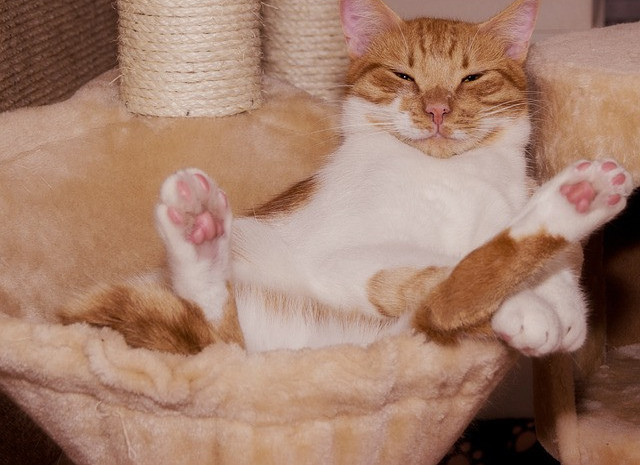
- near the cat’s resting area
- at the edges of the cat’s territory (around the window and home entrance)
- in living rooms where the cat spends most of the time
- places where the cat plays
- next to the places where the cat already scratches
Your cat’s routines and character traits can give you some good ideas as to location. For example, if your cat routinely greets you at the door, it makes sense to put the post by the entrance; if your cat is play-motivated – it’s better to choose an area where it frequently plays.
If you live in a big house, consider placing several posts in different places to ensure that whenever your cat wants to scratch, it has a post within easy reach of a paw.
2. Be Patient and Prepare the Treats
In spite of their reputation of being curious, cats are quite conservative and tend to approach new objects with caution.
Once you have a new post set in a suitable place, let it become a part of your cat’s environment – give your cat a day or so to investigate, familiarize with its presence and its smell in particular.
Reward your cat with treats every time you notice it paying attention to the post so that it can create positive associations with this new object.
Additionally, you can try to spark your cat’s curiosity by showing it what kind of sounds the post produces – rub your nails against the post encouraging your cat to do the same and see what happens.
Chances are that your cat will start scratching the post straight away but don’t get discouraged if it will decide to ignore the post.
It comes without saying but avoid forcing your cat to scratch the post. Giving cats freedom of choice is key in training, and there is a couple of ways to motivate the cat to choose the scratching post over other things around the house.
3. Integrating the Scratching Post into Playtime
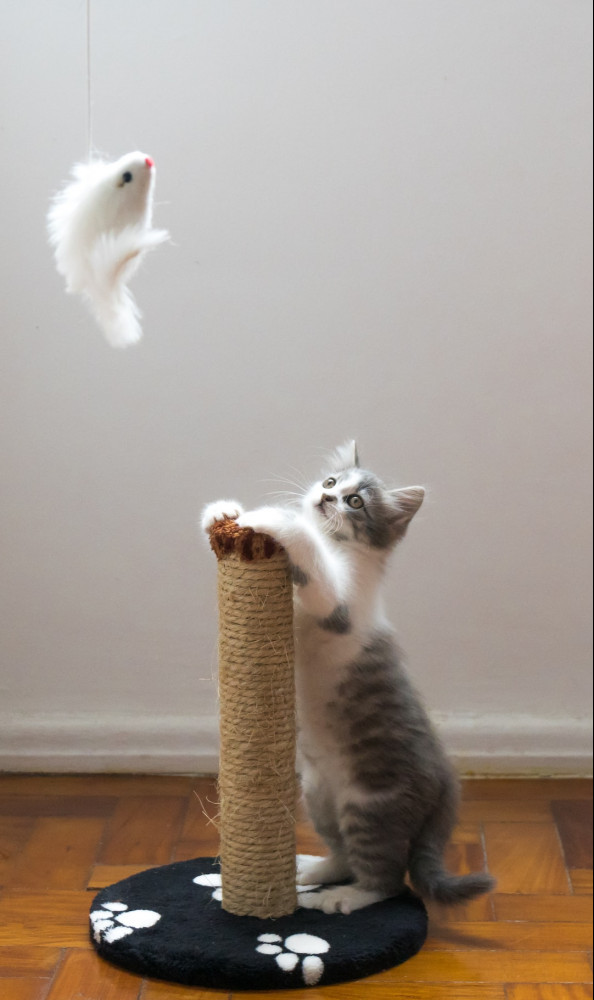 Cats like to sharpen their claws before hunt so one of the best ways to encourage the cat to use a post is making it a part of interactive playtime.
Cats like to sharpen their claws before hunt so one of the best ways to encourage the cat to use a post is making it a part of interactive playtime.
During play, wave a wand toy around the post or use a laser pointer and wait for your cat to jump on the post while reaching for toy. Then reward your cat with some treats.
You can also lay the post on its side initially to make it more interesting and less intimidating for your cat.
If your cat likes playing fetch, toss its favourite toys in the direction of the post. Similarly, you can scatter treats at the base of the post, or put them on top.
Play with your cat around the post regularly and praise it every time it places paws on the post.
4. Making the Post More Attractive
If your cat still wants nothing to do with the post, try to make it more attractive. Apply a catnip spray on the base of the post or hang a bag with dried Catnip from the top.
However, not every adult cat likes Catnip and most kittens don’t react to it. If your cat won’t go for Catnip, use Valerian or Cat Thyme instead. You can also try commercial products with pheromone attractants.
5. Establishing Boundaries
Providing decent scratching posts and rewarding your cat for using them may be enough to prevent or stop unwanted scratching.
However, sometimes it’s necessary to show the cat that the scratching post is the only acceptable target.
Whenever you see your cat scratches on furniture, carry it to its post or distract it with a toy.
It’s important to be consistent and keep redirecting your cat to the post and rewarding it for the right scratching until it gets the concept.
FAQ
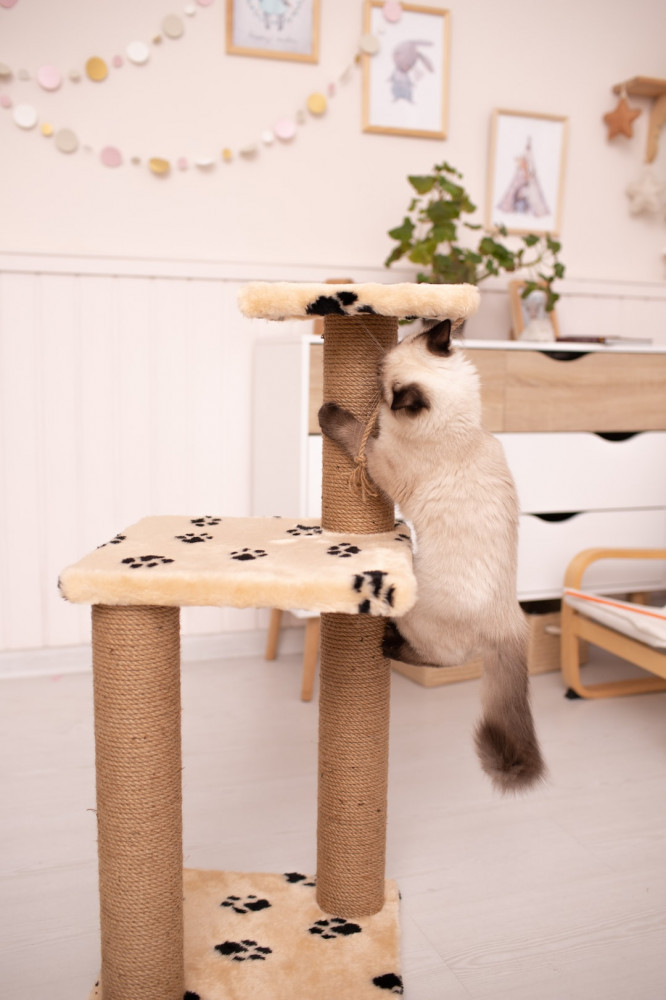
Do cats instinctively know how to use a scratching post?
Cats instinctively know how to scratch – in the wild they scratch on different parts of trees.
The texture of scratching posts resembles tree bark so some cats figure out what to do with the scratching post almost immediately.
At the same time, others need training and encouragement to use it, especially if they have already chosen a piece of furniture for scratching.
Will my cat use another cat’s scratching post?
Typically, cats are territorial about scratching posts so your cat will be unlikely to use unknown cat’s scratching post.
On the other hand, cats who live together and belong to the same social group often share belongings, including scratching posts.
How many scratching posts does a cat need?
It depends on the number of cats in the house and available space.
A single cat needs at a minimum one scratching post on each level of the house.
If two or more cats share territory, each of them needs its own post and at least one extra scratching post should be provided.
If you have something to add or wish to share your own strategies, please leave a comment.
Thank You For Reading!

